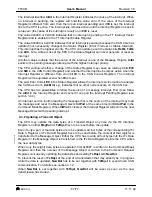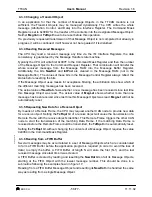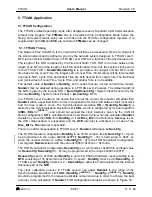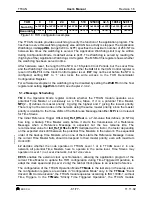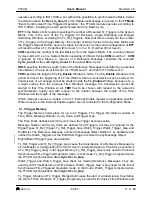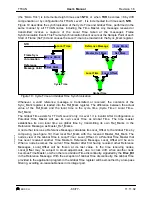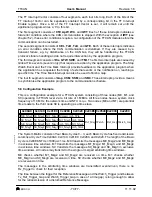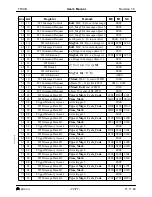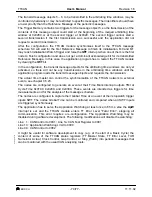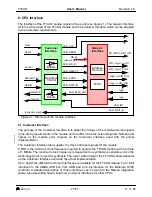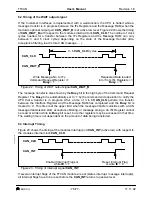
User’s Manual
BOSCH
- 67/77 -
Revision 1.6
TTCAN
11.11.02
manual_about.fm
Window, the retransmission may happen inside the same Window. The retransmission will not
be started if NewDat is reset by the application program.
When a Message Object for event driven messages is managed dynamically, the contents of a
Message Object may be changed at the same time the transmission is requested. In that
case, any previous content of the Message Object that is not transmitted successfully is lost.
5.4 TTCAN Gap Control
In the mode Event Synchronised Time Triggered Operation, the TTCAN message schedule of
the System Matrix may be interrupted by Gaps. In those Gaps, all transmissions are stopped
and the CAN bus remains idle. A Gap is finished when the next Reference Message starts a
new Basic Cycle. A Gap starts at the end of a Basic Cycle that itself was started by a
Reference Message with the bit Next_is_Gap=‘1’, so the Gaps are initiated by the current
Time Master.
The current Time Master has two options to initiate a Gap. A Gap can be initiated under
software control when the application program writes NiG=‘1’ in the Gap Control register. A
Gap can be initiated under hardware control when the application program enables (by writing
EPE=‘1’) the EVENT_TRIGGER input pin. When a Reference Message is started and EPE is
set, a high level at the EVENT_TRIGGER pin will cause Next_is_Gap=‘1’.
When a Potential Time Master is in SyncST In_Gap, it has three options to intentionally finish
a Gap. Under software control, writing FGp=‘1’ or under Hardware control, a low level at the
EVENT_TRIGGER pin will restart the schedule. The third option is a time triggered restart
when the application program writes TMG=‘1, controlled by the Time Mark register. Neither of
these options can cause a Basic Cycle to be interrupted with a Reference Message.
Any Potential Time Master will finish a Gap when it reaches its Tx_Ref_Trigger_Gap,
assuming that the event to synchronise on did not occur in time.
In the mode Strictly Time Triggered Operation, the bit Next_is_Gap=‘1’ in the Reference
Message will be ignored, as well as the EVENT_TRIGGER pin and the bits NiG, EoG, and
TMG in the Gap Control register.
5.5 Stopwatch
Although the application program can read the Local Time, Cycle Time, or Global Time
registers any time, the Stopwatch register offers the possibility to time external events without
any action by the application program.
To enable the Stopwatch, the application program first has to define Local Time, Cycle Time,
or Global Time as the Stopwatch source by writing SWS in the TT Clock Control Register.
When SWS is > 0 and SWE in the TT Interrupt Vector register is ‘0’, the actual value of the
time selected by SWS will be copied into Stop_Watch on the next rising edge of the
STOP_WATCH_TRIGGER pin and SWE will be set to ‘1’.
After the application program has read Stop_Watch, it may enable the next Stopwatch timing
by resetting SWE to ‘0’.
5.6 Local Time, Cycle Time, and Global Time and External Clock Synchronisation
The Local Time is a Cyclic Counter consisting of a 16-bit integer part and a 3-bit fractional
part. The integer part (the “Macro Tick”) is incremented once each NTU. The fractional part





